Guangzhou Higher Education Mega Center (HEMC) is about to get a revolutionary mode of transport - the "flying taxi"!
China's first low-altitude economic application demonstration island is born, the "flying taxi" is coming!
On 18th April 2024, the launch of the HEMC Low Altitude Economy Application Demonstration Island event was held in Panyu District., Guangzhou City, with the theme of "Innovation Leads Quality Wins in the Future", marking the birth of China's first Low Altitude EconomyApplication Demonstration Island.
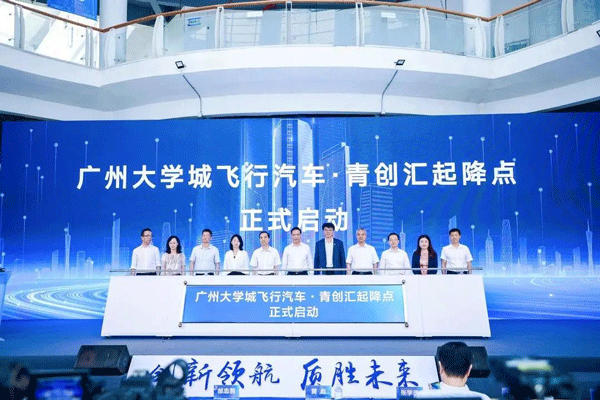
At this innovative event, the People's Government of Guangzhou Panyu District and Xiaopeng Huitian signed the Framework Agreement on Jointly Promoting the Demonstration of Flying Vehicle Applications, and jointly released a list of flying vehicle application scenarios to explore. In addition, the construction plan of flying car infrastructure was also announced, and the first four dedicated take-off and landing sites will be constructed in the university town, which will be equipped with the necessary facilities for take-off and landing of flying cars, parking, energy supply and communication, in order to promote the development of "low altitude + commuting", "low altitude + tourism", "low altitude + tourism", "low altitude + travelling", "low altitude + travelling", and "low altitude + tourism". This will provide a solid foundation for the promotion of innovative application modes such as "low altitude + commuting", "low altitude + tourism" and "low altitude + emergency response", and further consolidate HEMC's position as China's first demonstration island for the application of low altitude economy.
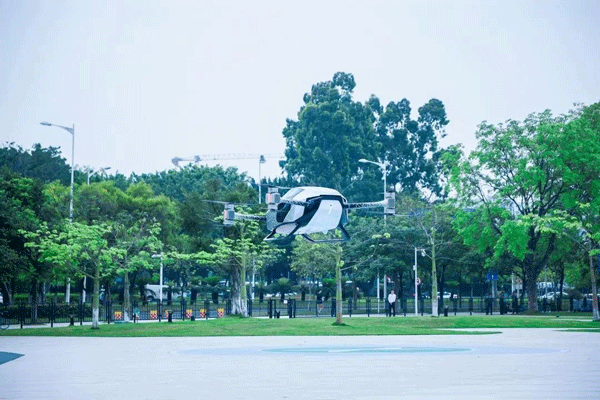
In HEMC, low-altitude economic application demonstration island completed the first low-altitude flight demonstration of Xiaopeng Huitian's flying car traveller X2, which adopts the automatic driving mode throughout the whole process, and at the same time both vertical take-off and landing capabilities, electric drive, intelligent systems, split design and other advantages of performance and functionality, represents the development direction of low-altitude flight "flying taxi", which foreshadows the future of the urban transport changes that may take place.
The Flying Car Traveller X2 is a combination of industry-leading technology and ingenuity, and AUDIOWELL involved in the process, using its superior ultrasonic rangefinder technology to help realize the application of fully autonomous driving modes in the Flying Car.
The Flying Car Traveller X2 flying a small step, a big step to bring people closer to the sky, so that the "flying taxi" this kind of futuristic urban air traffic travel mode is expected to become a reality.
The Future of Flying Cars:What will be needed to support those smart sensing technologies?
Ultrasonic Ranging Technology: Propeller Hovering Obstacle Detection
As a new type of low altitude flying vehicle, flying cars need to operate safely in complex urban environments, and accurate distance measurement technology is crucial for them, as accurate distance measurement can help flying cars hover stably during vertical take-off and landing, and avoid collisions due to inaccurate distance judgement. For example, in an urban environment, a flying car may encounter various obstacles, such as buildings, power lines, trees, etc., during take-off and landing. The application of ultrasonic sensors in propeller hovering obstacle detection can provide real-time obstacle information to the flying car, thus avoiding collision.
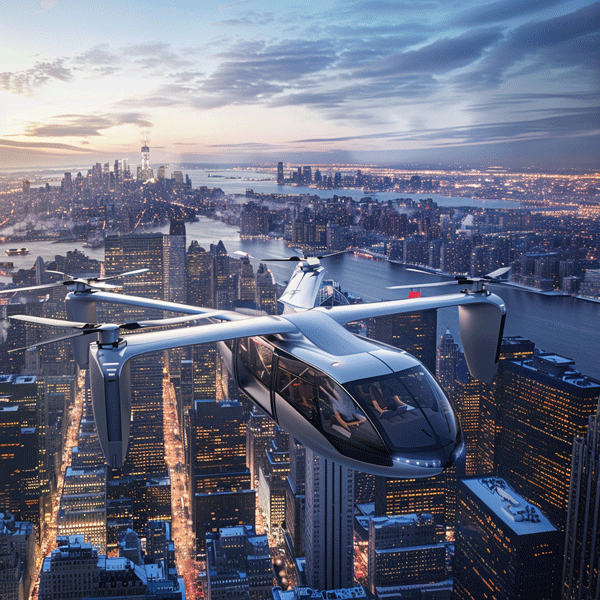
The high penetration capability and good direction of ultrasonic sensors make them an important tool for flying cars to remain safe in complex environments. Their ability to operate in a wide range of weather conditions improves the reliability and safety of flying cars; such sensors can be used in conjunction with other sensor systems (e.g.,LIDAR, cameras, etc.) on the flying car to provide a more comprehensive environmental sensing capability.
Haptic Feedback Technology: Enhancing Cockpit Safety and Responsiveness
The application of touch feedback technology to the screen provides the user with an intuitive interface that allows the pilot to control multiple functions of the vehicle through simple touch operations, which reduces the reliance on traditional physical buttons or switches and reduces operational complexity. The use of such technology in the operator interface allows the system to respond quickly to the pilot's commands, providing immediate feedback, which is critical for quick decision-making and reaction in emergency situations; at the same time, the vibration feedback tactile effect helps the pilot to confirm that the operation has been performed correctly, thus reducing the possibility of misuse.
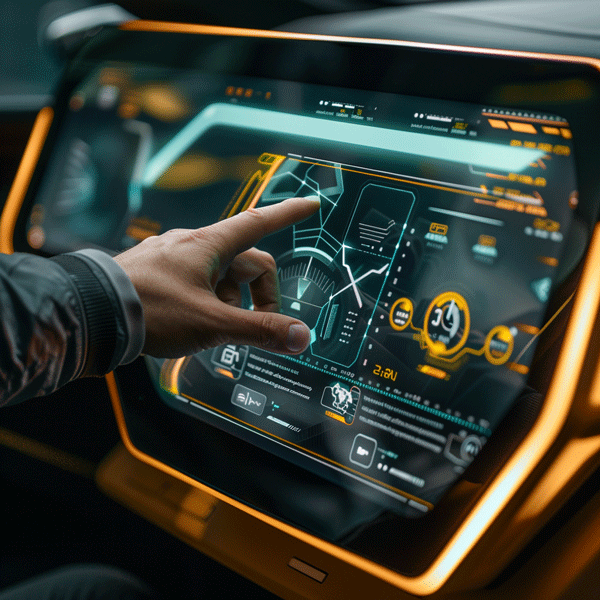
In addition, haptic feedback technology can be integrated with a flying car's safety systems, such as providing warnings when a potential hazard is detected or automatically performing safety procedures, thus enhancing overall flight safety.
CPD Application Technology Solution: Cockpit Crew Vital Signs Detection Throughout the Voyage
Flying cars may encounter emergencies during operation, such as a sudden deterioration of the driver's health, and the CPD solution can monitor the vital signs of the cockpit crew in real time, detect abnormalities in a timely manner so that appropriate measures can be taken to ensure flight safety. During long-haul flights, the CPD function can be turned on in the flying car to continuously monitor the health of passengers, such as heart rate, blood pressure, body temperature, etc., which is especially important for heart patients or passengers with special health needs. If abnormal vital signs are detected, the emergency response mechanism is automatically triggered, such as adjusting the flight plan, finding the nearest landing site or contacting emergency rescue services. In this way, flying cars with full-range vital signs monitoring will be safer and more secure, helping to increase passenger trust and satisfaction with flying car services.
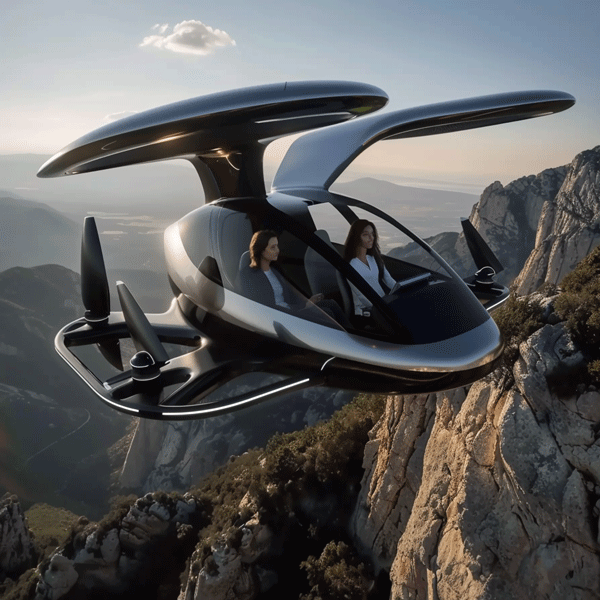
CPD solution collect in-flight vital signs data, which can be used to analyse the impact of flight on passenger health and thus raise the design of flying cars and flight strategies. By monitoring the physiological state of the driver, such solutions can help to prevent flight accidents caused by health problems and enable preventive maintenance and health management.
Low-altitude economy: a trillion-dollar industry windfall with bright prospects
According to the China Low Altitude Economy Research Report 2024, the market size of China's low altitude economy industry in 2022 will be approximately RMB 2.5 trillion. The market size is expected to reach RMB 3.7 trillion by 2028, growing at a CAGR of 6.9%. By 2035, the number of commercial and industrial-grade drones in China is expected to reach 26 million, and the number of drone pilots will grow to 630,000; the government expects the size of China's low-altitude economy industry to reach more than 6 trillion yuan.
With the low-altitude economy being listed as a strategic emerging industry, the development of the industry will receive more policy support.2023 The development of low-altitude economy was proposed at the Central Economic Work Conference in December 2023 and in the Outline of the National Comprehensive Three-dimensional Transportation Network Plan. Nowadays, low-altitude economy is growing rapidly in China with an expanding market scale, and is expected to continue to maintain a rapid development trend in the future, contributing more to the growth of the national economy.









 Focus on us
Focus on us